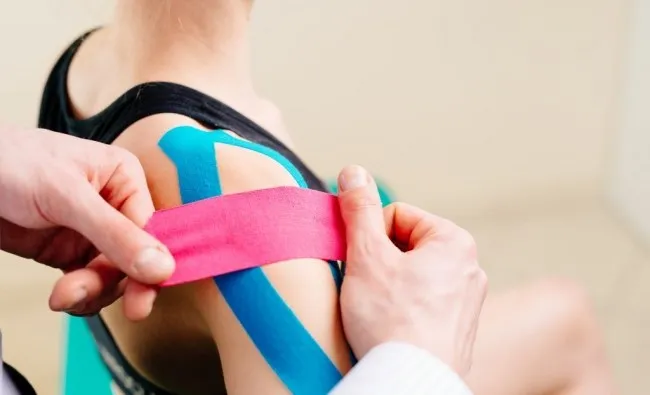Kinesiology taping has become an essential tool in the world of health and fitness. From athletes to physical therapists, many professionals now rely on this innovative technique to support muscle function, reduce pain, and enhance recovery. If you’re looking to deepen your knowledge or offer this service to your clients, enrolling in kinesiology taping courses is a smart move.
In this guide, we’ll walk you through how to choose the right course and get started with kinesiology taping for pain relief. Whether you’re a fitness trainer, massage therapist, or rehabilitation specialist, these steps will help you build a solid foundation.
Understand What Kinesiology Taping Is
Before diving into courses, it’s important to have a clear understanding of what kinesiology taping involves. Developed by Dr. Kenzo Kase in the 1970s, this method uses a flexible, skin-like tape designed to support muscles and joints without restricting movement.
Benefits of kinesiology taping include:
-
Pain relief and reduced inflammation
-
Improved circulation and lymphatic drainage
-
Support for injured or weak muscles
-
Enhanced athletic performance and recovery
By learning the correct application techniques, you can leverage these benefits for clients or yourself.
Define Your Goals
Are you a personal trainer who wants to offer kinesiology taping as an added service? A physiotherapist aiming to upgrade your skill set? Or a fitness enthusiast looking to manage your own pain or injuries more effectively?
Clarifying your goals will help you choose the most relevant kinesiology taping course. Some courses are designed for beginners, while others are more advanced and tailored to licensed healthcare providers.
Choose the Right Kinesiology Taping Course
With so many online and in-person options available, selecting the right course can feel overwhelming. Here’s what to look for:
1. Accreditation and Instructor Credentials
Ensure the course is taught by certified professionals, ideally with clinical or athletic experience. Accreditation by reputable organizations (such as the National Academy of Sports Medicine or similar) adds credibility.
2. Course Content
A comprehensive course should cover:
-
The science behind kinesiology taping
-
Common taping techniques and patterns
-
Applications for different body parts
-
Conditions treated (e.g., lower back pain, knee injuries, shoulder support)
3. Learning Format
Depending on your schedule and learning preference, you can opt for:
-
In-person workshops – great for hands-on practice
-
Online video courses – flexible and accessible from anywhere
-
Hybrid models – combine the best of both worlds
4. Practical Assessment and Certification
Look for a course that offers a certificate upon completion and includes a practical assessment. Certification is valuable if you plan to apply the skills professionally.
Practice What You Learn
After completing your course, hands-on practice is crucial. Begin with self-application or ask friends and clients if you can practice with them under supervision (if required).
Tips for Practicing Kinesiology Taping:
-
Start with common issues like shoulder or knee pain
-
Watch and rewatch instructional videos provided in the course
-
Use high-quality kinesiology tape to avoid irritation or detachment
-
Always assess the skin and muscle condition before taping
Regular practice will boost your confidence and technique, helping you get the most out of your training.
Stay Updated and Continue Learning
Like any area in health and fitness, kinesiology taping is evolving. Stay informed by attending workshops, following experts on social media, and reading scientific journals.
Advanced Courses to Consider:
-
Taping for neurological conditions
-
Pediatric kinesiology taping
-
Sports-specific taping techniques
-
Taping in post-surgical rehabilitation
Continuing education ensures your methods remain current and evidence-based.
Apply It in Your Practice or Fitness Routine
Once you’re confident, integrate taping into your professional offerings or personal wellness strategy. It’s especially useful in:
-
Fitness training sessions to prevent injury
-
Post-workout recovery routines
-
Rehabilitation programs for chronic pain or injury recovery
-
Sports massage therapy or physiotherapy sessions
Make sure to explain the benefits to your clients and demonstrate correct application techniques. This builds trust and enhances your professional credibility.
Get the Right Supplies
Choosing high-quality materials is as important as mastering the technique. Look for skin-friendly, waterproof kinesiology tape that provides both flexibility and durability.
You can find professional-grade tape, scissors, and other supplies at [e-physioneeds], a trusted source for physiotherapy and sports recovery equipment. Whether you’re a beginner or seasoned pro, they have everything you need to support your taping journey.
Conclusion
Kinesiology taping is more than just a trendy technique—it’s a science-backed method to support pain relief, performance, and healing. By following these steps and enrolling in a certified kinesiology taping course, you’ll gain a practical skill set that benefits both you and those you work with.
Start your learning journey today and take your health or fitness practice to the next level. For top-rated supplies and expert-recommended tools, visit [e-physioneeds] and gear up for success.
